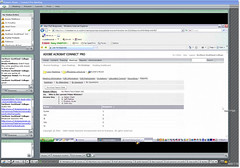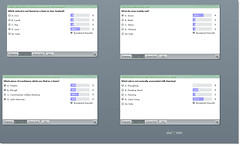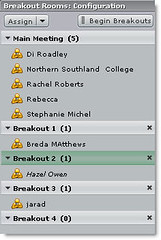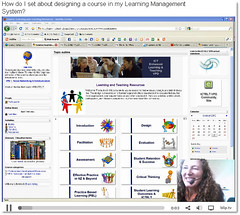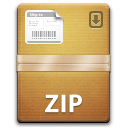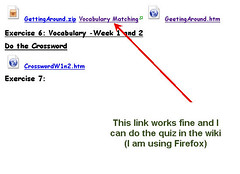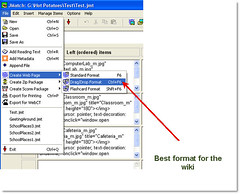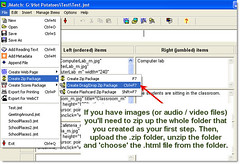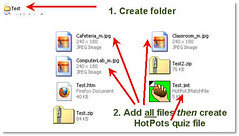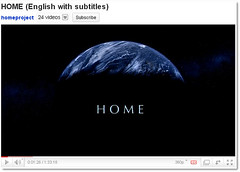In mid-1987 I received a telephone call from a university in
New Zealand inviting me to take up a teaching position. I was working out the end of my employment with a high-tech systems company in Belgium. The call from the
Dean of the Faculty of Business was timely. I recall investigating another position in systems engineering at New Zealand's principal telecommunications provider.
After deliberation, I accepted the position at
Massey University. Specifically, I was attracted by the prospect of teaching a subject for which I had a great passion and some consulting experience: strategic management (Mellalieu, 1982; Mellalieu & Hall, 1983; Mellalieu, 1987).
The Dean's phone call arose from an earlier meeting I had instigated with staff at Massey University. That meeting - in 1985 - was prior to our family embarking on several years
Overseas Experience (OE) in Europe. I was working as an industrial scientist in
Palmerston North at what is now part of a
Crown Research Institute (CRI). I met several staff in Massey's marketing department to express my interest in becoming a university teacher. Those teachers with whom I had met in 1985 responded to the Dean's search for a candidate to take up a teaching position.
The yearning to teach
My interest in teaching came from several sources. Both my parents had been teachers when our family emigrated to New Zealand in 1966. I recall vividly at the age of ten when I began consciously to teach myself. I recorded mental arithmetic problems on my father's tape recorder. I played back the tests to myself to improve my speed and accuracy in preparation for the daily mental arithmetic exercise. This activity signals the love-hate relationship that I have pursued in my application of communication technologies in my own teaching, beginning with my utilisation of of an as-live-to-air
TV studio for situating a master class in innovation and creativity (Mellalieu, 1998)
At high school, our mathematics teacher encouraged students to help each other with our exercises - both within and outside class. At university, I had a job coaching school students for their examinations. I'm proud to note that one of my pupils was accepted into medical school. I noticed during my doctoral studies that I loved to help my clients and colleagues use computers to explore data and improve decision-making. I distinguish this from an approach that merely tells others the 'correct' answer. I love to help others discover the joy of finding answers themselves. However, sometimes there is grinding effort before the joy.
I have always been inspired by my father's autodidactic inclinations. His talent of 'learner' I have inherited according to a strengths-based analysis I undertook in 2001: my profile is
here (Buckingham & Clifton, 2001). During the early 1970s,
St Peter's School, Cambridge, repositioned itself from being a primary school into a secondary school. As a teacher at St Peters, my father transformed himself from being a general primary studies teacher into a teacher of technical drawing and woodwork.
Although imported to New Zealand as a professional chorister and teacher, my father had always been an amateur handyman. He had converted an ambulance into a motor caravan in the early 1960s. During his transformation to technical studies at St Peter's he 'apprenticed' himself to a professional builder (and parent) to build a squash court and the woodwork shop. He taught technical drawing having completed the same lessons through a correspondence course two weeks earlier! He progressed later to building two family homes. The first home possesses an exceptionally high nail:wood ratio due to the enthusiasm of many willing helpers from his woodwork classes!
My mother was an innovative teacher. One of her best moments was developing a modern dance programme at the (then) new
Waikato University. I remain amused at her inflicting a visiting Australian modern dance company onto the First XV rugby team at my school. The players were muscle-strained for several days. Her tacit lesson was that dance was not a soft option! From my mother I am conscious of having developed the value and talents of conceptual and creative thinking - Intellection and
Ideation according to my personal Strengthsfinder assessment. I possess many books on lateral and creative thinking inspired by early suggestions from my mother of
Edward de Bono's works. Teaching lateral and creative thinking is one of my favourite courses. Here is the course
syllabus that over 3000 people have viewed on Scribd, a document archive. Furthermore, I posess more books authored by de Bono than any other author.
Preparing for an academic career
I felt need for advice on preparing for my new academic career. On a visit to the huge bookstore for the
University of Cambridge I found exactly what I needed: an introduction to the practice of becoming a lecturer. The book has long been on involuntary permanent loan from my library. However, I remember the book as being A4-sized, with a blue cover, and written by a British or Australian author.
Prior to our return to New Zealand my family undertook a two-week vacation through Austria and Italy. Each day of the vacation, I studied diligently my 'blue book' for about an hour, anticipating myself as a lecturer with a large class of students. Several hundred were in the offing. Such a large audience would be a new experience beyond the small handful of conference presentations I had presented during my previous ten-year career as an industrial research scientist. If I delve through my diaries
anciennes, I might find the reference to that so-helpful blue book with my personal study notes. Perhaps if I contact
Heffers on Trinity Street, they may have records that reveal my blue book's title. Google Books has certainly not yet yielded to me the name of this treasure trove of practical advice! To avoid such academic embarrasment, I now I record details of all my reading using the open-source
Zotero citations management system: books I read and on-line materials I surf. Zotero is a neat, but powerful add-on to my Firefox browser.
I recall two disparate points from my reading. First, the distinction between 'surface' and 'deep' learning. I became convinced of the value of constructing
deep learning experiences for my students - a peril to which I still subject many an unprepared or unwilling student! Second, the importance of scrutinising the statistical behaviour of one's gradebook. In particular, to ensure that final grades composed of the sum of several term assignments were treated statistically to ensure that each assignment contributed the intended weight to the final. I find it curious what one remembers - and wonder what has moved into one's subconscious practice! I continue to examine the statistical patterns in my gradebooks. I look especially for early indicators during a teaching semester of excellent and at-risk performance by my students and advise my students of requisite remedial action they might need to take. For an example of gradebook analysis and student feedback, see
here.
Arriving at the academy
In October 1987 I arrived at Massey University, Palmerston North, and met my new Head of Department. I was tasked immediately to create anew two courses: Management, and Business Policy. Both courses were studied concurrently by intramural (on-campus) and extramural (off-campus) students. Requesting access to materials previously used to teach the courses, I was instructed specifically NOT to base my course on previous materials, but to start with my own approach, guided with assistance from the university's extramural studies department. I recall this as the first and last instruction I ever received from a Head of Department until I joined New Zealand's pathologically managerialist polytechnic sector in 2000!
My immediate priorities were to select course textbooks, construct a syllabus, create assignments, and produce the self-study materials for the extramural students. The course prescription was the only guideline for what I chose to teach, and how I chose to teach. If I remember correctly, the prescription included a course title, a pre-requisite course code, and a two-line description that was detailed amongst hundreds of other prescriptions in the so-called University Calendar.
I had arrived at the university just in time for the end-of-year examination season. Consequently, I was conscripted into marking the stack of some 1000 scripts for the Fundamentals of Business course. I was soon advised that I was grading scripts an average of 10 points lower than the other markers. Perhaps this feedback alerted me to the importance of the statistical treatments explained by my 'blue book'.

I recall two important pieces of advice gleaned during this experience. First: XYZ. eXamine Your Zipper before leaving your office to present a lecture! The second piece of advice was delivered in the style of the
Rime of the Ancient Mariner in which the shooting of an albatross leads to an enormous period of bad luck for the mariner and his crew. In the case of a university, the equivalent precursor to dire misfortune is loosing an examination script. I was told a story that recalled how a stack of university examination scripts (colourfully coloured, fortunately(!?)) were found fluttering - unmarked - amongst the city rubbish dump. No refuse transfer stations had yet appeared in clean, green, New Zealand.
Preview of part 2
In my next episode, I recall my anxiety and preparation for my first lecture followed by the logistical catastrophe of my first on-campus programme inflicted on several hundred extramural students. I conclude with reflections on the approaches I undertook to establish and develop my personal approach to curriculum innovation and development.
Author
Peter J. Mellalieu is a curriculum innovator who teaches innovation, entrepreneurship, strategy, creativity, and sustainable enterprise development at Unitec Institute of Technology, Auckland, New Zealand. He studied industrial engineering and management at Massey University (BTech (hons), 1973-1976) and public policy at
Victoria University of Wellington (MPubPol, 1976-78). His doctoral studies in management science and information systems (1979-1982) engaged him implementing decision support systems for strategic planning in several agribusiness sectors. He is an ardent advocate for education for sustainability. His professional journal is at
http://pogus.tumblr.com and resources for teachers and students at
http://teach.myndsurfers.org.nz.
References
Buckingham, M., & Clifton, D. O. (2001). Now, Discover Your Strengths (1st ed.). Free Press.
Mellalieu, P. J. (1982). A Decision Support System for Corporate Planning in the New Zealand Dairy Industry (Doctor of Philosophy in mathematics, statistics and operations research). Victoria University of Wellington. Retrieved from
http://hdl.handle.net/10063/568
Mellalieu, P. J. (1987). Strategic orientation in a biological science laboratory (the case of DSIR Applied Biocehemistry Division). New Zealand Journal of Technology, 3, 153-157. Retrieved from
http://web.mac.com/petermellalieu/Teacher/Examples/Entries/2007/10/28_Case_study%3A_strategic_orientation_in_a_biological_science_laboratory.html
Mellalieu, P. J. (1998). Weaving the threads of innovation, creativity, and entrepreneurial learning through a university-located reality-TV and master class: Enterprise MasterWorks (EMW)™. Presented at the International Conference on Higher Education and Small/Medium Enterprise (SMEs), Rennes, France: Centre Études et Recherche EURO PME, Rennes International School of Business. Retrieved from
http://web.mac.com/petermellalieu/Teacher/Examples/Entries/2007/10/18_Weaving_the_threads_of_innovation%2C_creativity%2C_and_entrepreneurial_learning_through_a_university-located_reality-TV_and_master_class%3A_Enterprise_MasterWorks_(EMW).html
Mellalieu, P. J., & Hall, K. R. (1983). An Interactive Planning Model for the New Zealand Dairy Industry. Journal of the Operational Research Society, 34, 521-532. doi:10.1057/jors.1983.119
Related articles
